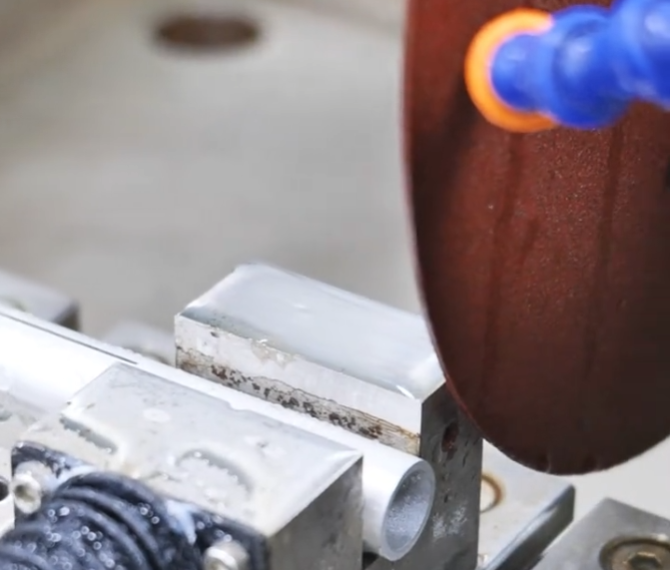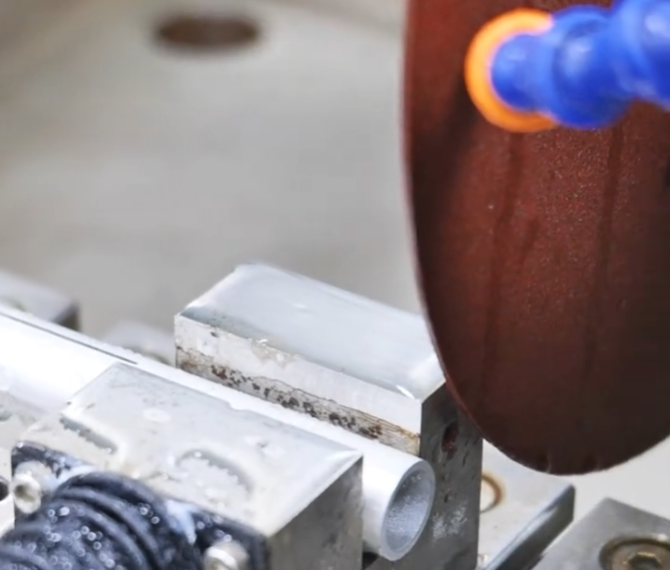LATEST NEWS
Press releases & Product news
Are you always having problems with metallographic cutting?
2025-06-19

When doing metallographic analysis, cutting the sample is the first step, and it is also the step that is prone to error. Uneven cut surface, many burrs, or even burn deformation will not only affect subsequent sample preparation, but may also lead to misjudgment! Today we will look at the root causes of cutting problems and provide practical solutions.

1. Why do your metallographic cutting always go wrong?
- Cutting disc
Passivation or uneven wear: Cutting discs become blunt after long-term use, and friction increases during cutting, resulting in rough cut surfaces and many burrs.
Hardness mismatch: Cutting discs for cutting aluminum alloy and high-carbon steel are completely different.
- Cutting parameters
Too fast speed: Frictional heat is too high, and the edge of the sample is easy to burn.
Too much feed pressure: Forced "hard cutting" will cause the grinding wheel to break easily, and the cut surface will become bumpy.
- Coolant
Insufficient flow: Inadequate cooling, heat accumulation, and direct sample burns.
Too many impurities: Too many impurities in the coolant will affect the heat dissipation efficiency and even clog the nozzle.
- Sample fixation
Loose fixture: The sample shakes during cutting, the cut surface is skewed, and may even fly out and injure people.
Uneven workbench: The sample is unevenly stressed, the cut surface is tilted, and the subsequent grinding and polishing is affected.
2. How to cut out perfect metallographic samples?
Solution 1: Choose the right cutting disc
Replace regularly: If the cutting disc is found to be severely worn or the cutting efficiency is reduced, it needs to be replaced immediately.
Select by material:
Soft materials → It is recommended to use resin cutting discs produced by LABTT
Hard materials → It is recommended to use diamond cutting discs produced by LABTT
Solution 2: Optimize cutting parameters
Speed: Use low speed for hard materials and increase appropriately for soft materials.
Feed pressure: Gentle and gradual, avoid "cutting all the way through", especially for brittle materials.
Solution 3: Ensure proper cooling
Flow check: The coolant should cover the entire cutting area to avoid intermittent spraying.
Regular maintenance: Clean the coolant pipeline every month and replace dirty coolant.
Solution 4: Stabilize and fix the sample
Select special fixtures: Avoid "making do" with general fixtures, especially for small-sized samples.
Check the workbench: Ensure it is level to avoid uneven cutting force.
Metallographic cutting may seem simple, but it actually has hidden secrets! Grinding wheel selection, cutting parameters, coolant management, sample fixing, any mistake in any link may make you lose all your previous work. According to the above method, you can also easily cut a perfect sample that is flat, burr-free, and burn-free!
If you still have questions after cutting, please leave a message in the comment area and we will answer them in a targeted manner!


